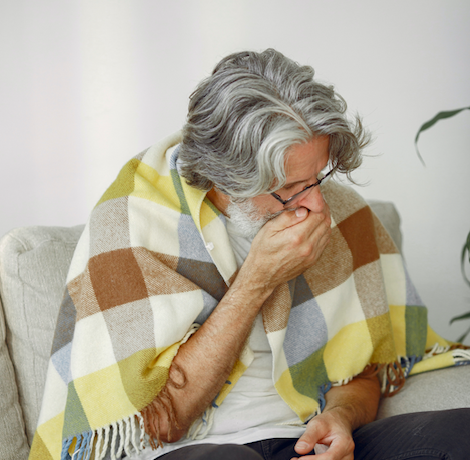A little-known virus that causes cold-like symptoms infected U.S. residents at higher-than-usual rates this spring.
The spike in human metapneumovirus cases came on the tails of national surges of other respiratory illnesses like respiratory syncytial virus, influenza and COVID-19, which each peaked during the fall and winter. These increases, and a similar rise in norovirus cases, mostly have been attributed to people returning to their pre-pandemic lifestyles.
- MORE HEALTH
- Former first lady Rosalynn Carter has dementia. What are warning signs of the condition?
- Paralyzed man walks using 'digital bridge' between brain and spine
- Millions struggle with body dysmorphia, a mental health condition concerning obsession with perceived flaws
But many people have never heard of the human metapneumovirus, or hMPV, which causes upper and lower respiratory illnesses.
In March, the weekly percentage of hMPV-positive tests spiked to 19.6% for antigen tests and 10.9% percent for PCR tests, according to data from the U.S. Centers for Disease Control and Prevention. Before the pandemic, the weekly percentage of hMPV-positive tests peaked at 6.2% to 7.7%. The spike had subsided by early last month.
"The thing that is making people concerned about this right now is the positivity rate that the CDC reported on their surveillance of the past few months shows that it hit (very high) levels that I don't believe it's hit, at least in the recent past," Dr. Scott Roberts, an infectious diseases doctor at Yale Medicine, told The Huffington Post.
Research shows hMPV is nearly as common in the U.S. as the flu and RSV, which is closely related to hMPV. Though those illnesses are better known, studies have found hMPV to be the second most common cause of respiratory infections in kids, and as common in hospitalized seniors as RSV and the flu.
“(HMPV is) the most important virus you've never heard of," Dr. John Williams, a pediatrician at the University of Pittsburgh who researches vaccines and treatments for hMPV, told CNN.
What is hMPV?
HMPV is a respiratory virus that causes upper and lower respiratory infection, according to the American Lung Association. It is a seasonal disease that usually spreads in the winter and early spring, like RSV and the flu. HMPV was discovered in 2001, and is in the Pneumoviridae family, like RSV.
What are the symptoms?
For most people, hMPV causes mild upper respiratory symptoms similar to those of cold, such as a cough, runny nose, nasal congestion, sore throat and fever. Symptoms usually last two to five days, and often go away on their own.
In more serious cases, people may experience wheezing, difficulty breathing, asthma flare-ups or secondary lower respiratory infections like bronchitis or pneumonia, according to the American Lung Association.
What are the treatments?
There is currently no specific antiviral therapy to treat hMPV and no vaccine to prevent infection, according to the CDC. Therefore, treatment is mostly geared toward easing cold symptoms, such as over-the-counter medications to control pain and fever or decongestants. Patients with more severe symptoms may require a temporary inhaler or stronger oral medication.
How does it spread?
HMPV is spread via respiratory droplets emitted when people cough or sneeze, close personal contact or touching surfaces contaminated with the virus and then touching one's mouth, eyes or nose.
To prevent the illness from spreading, the CDC recommends covering one's mouth and nose when coughing or sneezing, washing hands frequently and thoroughly, refraining from sharing cups and eating utensils with others, and staying at home when sick.
Who is most at risk?
Though hMPV can infect people of all ages, children, seniors and people with weakened immune systems have the highest likelihood of developing complications, according to the American Lung Association.
Should I see a doctor?
Many people with hMPV likely do not even know they have it, as people are not usually tested for it outside of a hospital or ER. The illness usually goes away on its own, according to the American Lung Association. But people with worsening respiratory symptoms or with shortness of breath, severe cough or wheezing are advised to see a doctor.
Follow Franki & PhillyVoice on Twitter: @wordsbyfranki
| @thePhillyVoice
Like us on Facebook: PhillyVoice
Have a news tip? Let us know.


